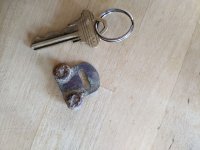Teredo Navalis
Jr. Member
- Oct 22, 2011
- 39
- 0
- Primary Interest:
- All Treasure Hunting
SteveMC,
You must not have read the entire paper. Please read page 39 and it's direct facts of the specific gravity of oolitic agronite sand, using the world wide classic reference of Bahamian oolitic aragonite. The specific gravity is 2.90 ( ranges from 2.88-2.92 ) As per the Halimedia, it is lighter, and ranges from 2.45-2.71, but due to it's natural porous nature has sediment present within it. I can reference you a classic study from Bikini Atoll if you would like to entertain a scientific discussion.
Please provide me with any true facts or references if you have any. Otherwise, please save your criticism. I am sticking to facts with supporting documentation.
You must not have read the entire paper. Please read page 39 and it's direct facts of the specific gravity of oolitic agronite sand, using the world wide classic reference of Bahamian oolitic aragonite. The specific gravity is 2.90 ( ranges from 2.88-2.92 ) As per the Halimedia, it is lighter, and ranges from 2.45-2.71, but due to it's natural porous nature has sediment present within it. I can reference you a classic study from Bikini Atoll if you would like to entertain a scientific discussion.
Please provide me with any true facts or references if you have any. Otherwise, please save your criticism. I am sticking to facts with supporting documentation.







